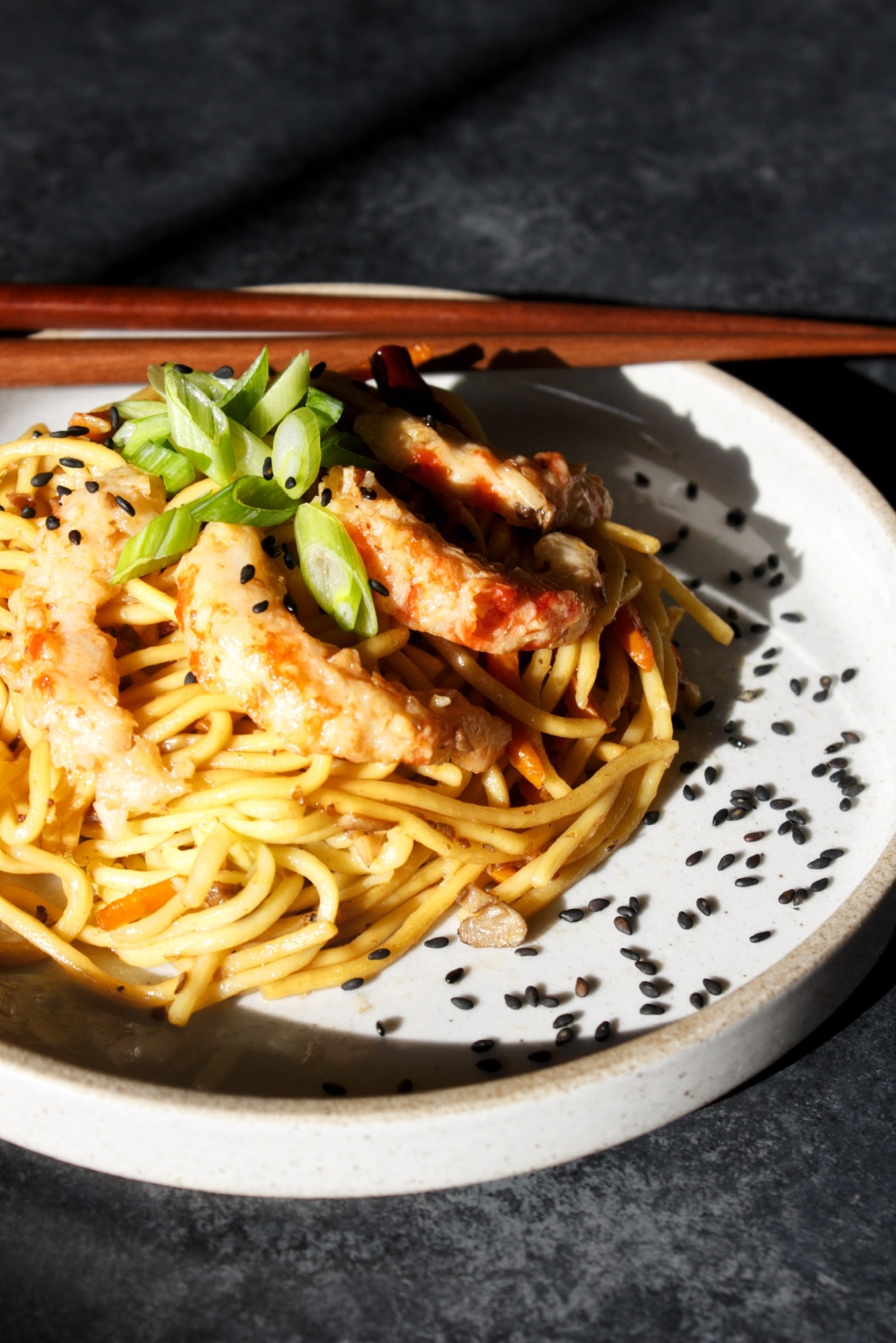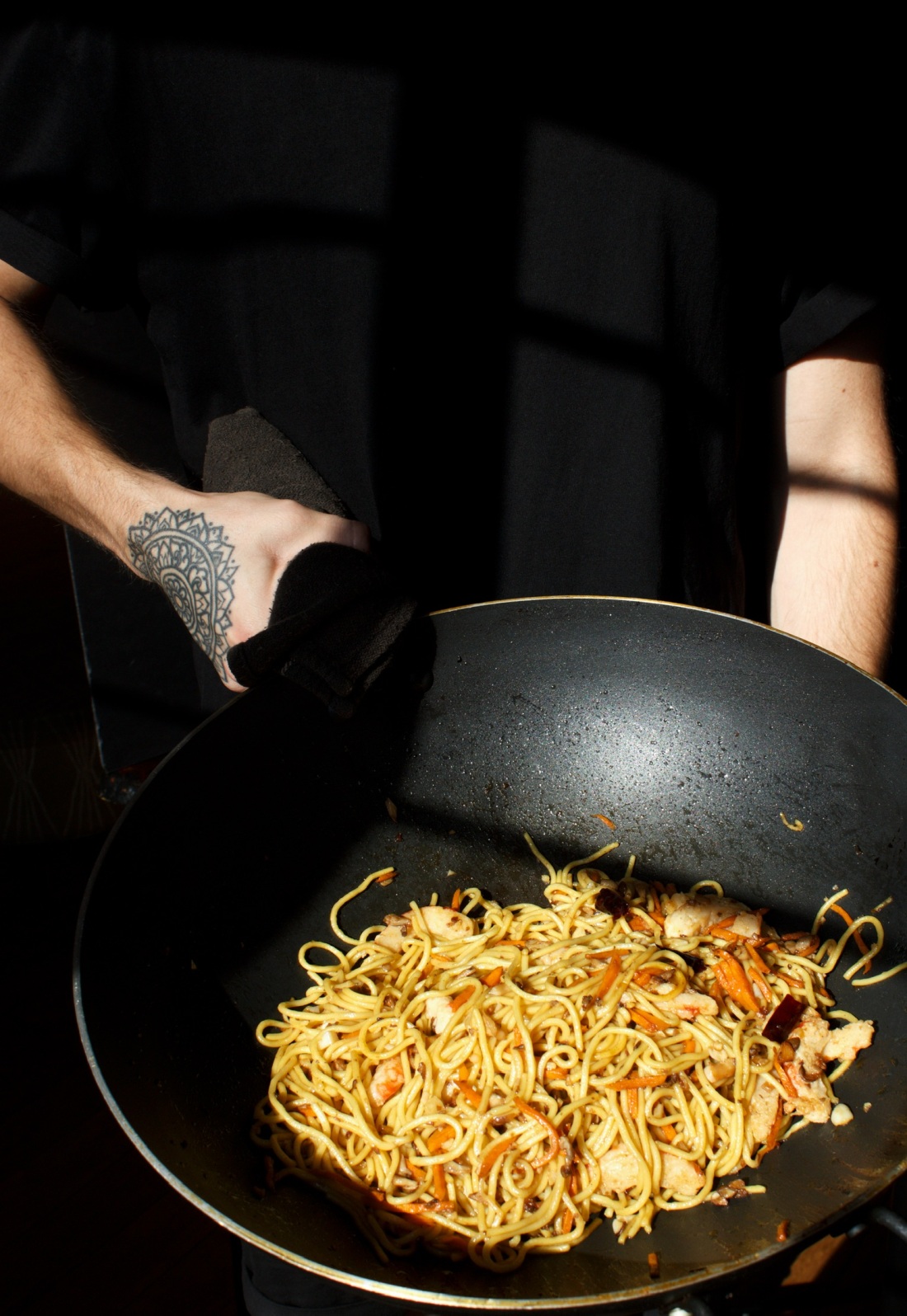 I know what you’re thinking. Actually, maybe I don’t… even though I insist on starting half our articles with this phrase. Regardless of whether or not I can read your mind, a noodle dish like this admittedly doesn’t have much visual wow factor. After all, what separates one heaping pile of noodz from the next? I’ll tell you: umami, umami, and more umami.
I know what you’re thinking. Actually, maybe I don’t… even though I insist on starting half our articles with this phrase. Regardless of whether or not I can read your mind, a noodle dish like this admittedly doesn’t have much visual wow factor. After all, what separates one heaping pile of noodz from the next? I’ll tell you: umami, umami, and more umami.

I always understood that umami—the name given to depth or savoriness—is important, but I didn’t know the profound effect it could have on a dish until I started diving deeper into Japanese cuisine. Any ordinary dish, like rice or noodles, can be made completely irresistible with the right use of umami-packed ingredients, which is anything with copious amounts of glutamic acid. Such foods include soy sauce, mushrooms, tomatoes, and hundreds of other foods. Umami can also be achieved through certain cooking methods, such as dehydrating (think sun-dried tomatoes), fermenting (think miso paste), Maillard reactions (think caramelized onions), along with plenty others.
Don’t think of umami in a scientific terms though, simply let your tastebuds guide you. Combining a variety of ingredients and cooking methods is the best way to achieve optimal umami-ness, which is exactly what makes these noodles extra fucking dank. Simmering dried chilis and finely minced oyster mushrooms in piping hot sesame oil forms a spicy, complex base for this stir-fry. Mincing the mushrooms allows them to be incorporated into every bite, while sautéing them removes excess moisture and browns them, thus magnifying their glutamic acid content and inflicting them with tasty Maillard reactions.

To finish it off, vegetarian oyster sauce (aka mushroom sauce), soy sauce, and lime juice coat the noodles, endowing every bite with savory deliciousness. The combination of each ingredient results in a mouth-tingling spice, imperceivable depth, and a weird supernatural force that won’t let you put down your chopsticks. That’s what makes these noodles different.
If you like what your eyes are tasting, then share this recipe with your friends on Instagram, Facebook, or Pinterest at @noeggsorham! For more flame-emoji photos, geeky food talk, and mouth-watering dishes, subscribe to our email list. Tag us in a photo when you create one of our recipes at home so we can share it!
Remember to Slurp Your Noodles!

Spicy & Umami Vegan Shrimp Lo Mein
Minced oyster mushrooms and mouth-tingling chili oil form the base for these irresistible noodles. Savory mushroom sauce, lime juice, and soy sauce further elevate the dish's umami and round it out with a calm acidity.
Ingredients
- 1 lb fresh chow mein or yakisoba noodles
- 5 oz oyster mushrooms, minced
- 4 oz (~10) vegan shrimp, sliced in half lengthwise
- 1/4 large carrot, peeled and cut into matchstick pieces*
- 6 medium garlic cloves, roughly chopped
- 1-2 dried red chilis, split and seeds removed*
- 1 scallion, cut into thin rounds
- Toasted black sesame seeds
- 1/4 c sesame oil, divided
- 2 tbsps mushroom sauce (aka vegetarian oyster sauce)
- 2 tbsps water
- 1 tbsp soy sauce
- 1 tbsp lime juice
- salt
Directions
- Place noodles in a colander and rinse with warm water until loosened. Set aside for now.
- In a small bowl, whisk together mushroom sauce, water, soy sauce, lime juice, one tablespoon of sesame oil, and set aside.
- Heat a wok over high heat for a couple minutes. Once hot, add in 3 tablespoons of sesame oil along with dried chilis and cook until chilis become fragrant and darken slightly; about 2 minutes.
- Toss in minced mushrooms, a medium pinch of salt, and cook until mushrooms reduce in size and begin to brown around the edges—2-3 minutes—stirring occasionally.
- Add in carrots, garlic, shrimp, and continue to cook until the carrots and shrimp are softened and the garlic starts to brown—about 3 minutes—tossing occasionally.
- Rinse noodles once again with warm water, drain thoroughly, then toss into the wok. Cook, tossing frequently, for 2 minutes. Pour in sauce mixture from Step 2 and toss until evenly incorporated; about 2 minutes.
- Mix in scallion slices, a few dashes of black sesame seeds, and serve! Store any leftovers in an airtight container in the fridge for up to 3 days and reheat in a wok over high heat with a splash of sesame oil until hot.
*We used a mandolin with a julienne insert to get nice, matchstick pieces out of the carrot.
*We enjoy a fair amount of spice, so we used two chilis, but if you have a more mild palate, go with one chili.